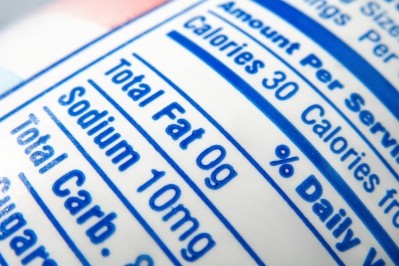What's 'healthy'? FDA limits on saturated fat and sugar a let-down for dairy

It’s been 28 years since the FDA last reviewed the definition for ‘healthy’ foods and when they could be labelled as such. The proposed criteria is said to conform with nutrition science, labelling and dietary guidelines, and forms part of the body’s bid to reduce the prevalence of chronic disease.
Dairy is included on the list of naturally nutrient-rich foods alongside fruit, vegetables, protein foods, oils and grains. But a closer look at the proposals reveal that certain dairy products, such as flavored milk or yogurts, may not be considered ‘healthy’ if their sugar, sodium or saturated fat content is above the daily value (DV) threshold set by the FDA.
This is because the body wants to limit the excess intake of nutrients such as these listed above due to their association with chronic disease risk.
For a dairy product to imply health-related benefits on its label, it must contain at least ¾ cup equivalent dairy, have up to 5% DV sugar, 10% DV sodium, and 10% DV saturated fat. Examples of ¾ cup equivalent dairy is 6oz fat-free yogurt or 1 1/8oz non-fat cheese, whilst the daily-value limits translate to 2.5g of sugar, 230mg of sodium, and 2g of saturated fat, with no limit on total fat content.
This means that products which currently qualify as ‘healthy’, such as sweetened yogurt, would no longer be under the proposed definition.
‘Flies in the face of science’
The International Dairy Foods Association (IDFA) has said that ‘[w]hile the proposed rule takes some positive steps toward encouraging consumption of dairy products…, it falls short in many other important areas by limiting how dairy labels communicate the full nutritional benefits of dairy to consumers’.
In particular, the association has suggested that the low levels of sugar, saturated fat and sodium required for a dairy product to be classed as ‘healthy’ could altogether restrict the consumption of the food group.
“[T]he proposed rule ignores a fundamental tenant of nutrition guidance: a food must be consumed in order for it to have any nutritional and health benefit. Restricting or limiting dairy foods - which are severely under consumed according to the federal government’s own [daily guidelines] and widely known to be nutritionally dense - flies in the face of science,” said Joseph Scimeca, senior vice-president of regulatory and scientific affairs for IDFA.
The association has called on the FDA to revisit portions of the rule regarding added sugars, sodium and fat. It stated that the FDA’s new rule should ‘recognize the benefits of dairy at each fat level. Ignoring the benefits of milk fat will be a lost opportunity to embrace newer science and will contribute to ongoing confusion about the healthfulness of all dairy products.’
IDFA also wants the added sugars limit to be revised, highlighting that flavored milk should be less than 13g of added sugar per 8 fluid ounce serving, and flavored yogurt should be less than 23g of total sugar per 6oz serving. The body argued that ‘moderate’ levels of added sugars would increase palatability and encourage consumption.
It also wants the sodium limit to be increase, to factor in that ‘salt plays a crucial role in the manufacture and ripening of natural and processed cheeses and impacts overall product functionality, integrity, safety, and quality’.
The association also criticized the FDA for failing to highlight the benefits of milk and dairy, and the food category’s role in children’s diets. “[T]he rule ignores overwhelming nutrition and dietary science demonstrating that dairy is a crucial part of a healthy diet beginning at a very young age,” Scimeca argued. “In fact, no other type of food or beverage provides the unique combination of 13 essential nutrients that milk and dairy contribute to the American diet, including high quality protein, calcium, vitamin D, and potassium, along with the health benefits including better bone health and lower risk for type 2 diabetes and cardiovascular disease.”
According to US Department of Agriculture and US Department of Health and Human Services Dietary Guidelines for Americans (2020-2025), more than 80% of Americans have dietary patterns that are low in vegetables, fruits, and dairy, whilst most Americans exceed the recommended intake limits for added sugars, saturated fats, and sodium. To help shoppers quickly distinguish which food products abide by the definition of healthy, the FDA is developing a new front-of-pack symbol, with the government agency currently conducting consumer research.
“Diet-related chronic diseases, such as cardiovascular disease and type 2 diabetes, are the leading causes of death and disability in the U.S. and disproportionately impact racial and ethnic minority groups,” concluded FDA Commissioner Robert M. Califf, M.D. “Today’s action is an important step toward accomplishing a number of nutrition-related priorities, which include empowering consumers with information to choose healthier diets and establishing healthy eating habits early. It can also result in a healthier food supply.”















